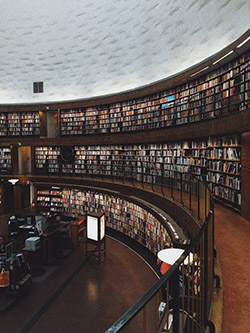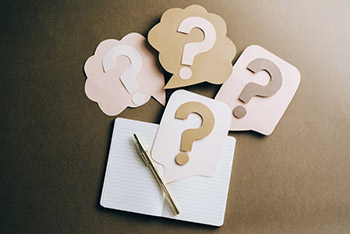In a world filled with uncertainty, “Risk Savvy: How to Make Good Decisions” by Gerd Gigerenzer cuts through the chaos with practical strategies that turn uncertainty into opportunity. This groundbreaking book reveals how we all misjudge risk daily—whether it’s health scares or financial pitfalls—and equips you with simple, powerful tools to make clearer choices without relying on experts or complex data. Whether managing money, protecting your family’s health, or facing life’s biggest dilemmas, Gigerenzer’s insights transform the way we understand risk, proving that smart decision-making is within everyone’s reach. Here are some of the key ideas mentioned in the book:
Key Idea No. 1: Risk Literacy Matters

In a world where information flows endlessly and uncertainty feels like a constant companion, understanding how to assess risk has become one of the most vital skills we can possess. Every day, we are bombarded with data—health warnings, financial advice, political promises, and scientific claims—but the ability to make sense of this overflow of information is often missing from our lives.
This gap isn’t just a personal challenge; it’s a societal issue that affects how we make decisions, trust institutions, and respond to the world around us. The truth is, most of us aren’t taught how to think critically about risk in school, even though it’s something we face every single day. Modern education systems often focus on subjects that offer clear answers—like math problems with one right solution or history lessons with dates and events. But the real world rarely works that way.
Life is full of unknowns, probabilities, and trade-offs that can’t be neatly solved with a formula. When we’re not taught to analyze uncertainty, we end up making decisions based on gut feelings, fear, or misleading headlines. For instance, a study might say a new drug increases the risk of a rare side effect by “five-fold,” which sounds terrifying at first glance. But if that original risk was already extremely low—like 1 in 7,000—an increase to 5 in 7,000 is almost negligible. Without understanding how to interpret these numbers, people can be easily panicked or misled into making choices they wouldn’t have otherwise.

This problem isn’t limited to health issues. In politics, for example, leaders often make sweeping promises like “this plan will fix everything,” but without clear details or trade-offs, voters are left grasping at vague assurances instead of concrete facts. Similarly, in finance, investors might be swayed by sensationalized reports about market trends while ignoring the deeper data that could reveal long-term risks or stability. The result is a public that’s vulnerable to manipulation, where fear and misinformation can cloud judgement.
The complexity of modern systems—whether it’s financial regulations, medical treatments, or political policies—only adds to this challenge. Many of these systems are designed with layers of jargon and intricate details that make them hard for non-experts to understand. This isn’t always intentional, but it creates a power imbalance where those who control the information hold more influence. At the same time, there’s a cultural tendency to confuse complexity with intelligence, valuing convoluted solutions over straightforward ones.

Even those trained in fields that require rigorous analysis—like doctors or journalists—often struggle to communicate risk effectively to the general public. A physician might rely on statistical evidence from a study but fail to explain it in a way a patient can grasp. A journalist might report on a finding without highlighting its limitations, leaving readers with incomplete information. This disconnect between expertise and understanding creates a dangerous gap, eroding trust in institutions and making people more susceptible to misinformation.
The solution isn’t about becoming experts in every field but rather developing a mindset that prioritizes critical thinking and curiosity. Instead of accepting numbers at face value, we need to ask questions like “What’s the actual number?” or “How does this compare to my own situation?”
Understanding absolute risk—real-world probabilities—rather than relative risk, which can distort perceptions, is crucial. For example, a 100% increase in a rare event might still mean an extremely low overall chance, while a small change in a high-risk scenario could have major implications. Learning to distinguish these differences helps us make decisions based on evidence rather than fear or hype.

Cultivating this kind of thinking requires more than just education; it demands a cultural shift toward curiosity and skepticism. We need to question everything—whether it’s a headline about a new study, a political promise, or a health claim. This isn’t about being cynical but about being informed. It means asking for data, understanding how research is conducted, and recognizing when information is incomplete or biased.
Ultimately, risk literacy is about reclaiming our autonomy in an increasingly complex world. It’s about realizing that we don’t need to be experts to understand the numbers shaping our lives—we just need to ask the right questions and seek clarity. The goal isn’t perfection but continuous learning and a willingness to engage with uncertainty thoughtfully. In a time when misinformation spreads quickly and decisions carry high stakes, developing this skill is not just useful—it’s essential for navigating life with confidence and clarity.
Key Idea No 2: Why Do We Fear?

Fear is an ancient emotion deeply rooted in our biology, designed to keep us safe from danger. Yet its expression varies widely across individuals and cultures, shaped not just by what we’re born with but by the stories we grow up with.
Fear isn’t a fixed truth; it’s a mix of instincts and learned responses that change depending on where we live, what we’ve been taught, and how our societies view the world. Understanding this helps us see that many of the things we fear aren’t just natural reactions—they’re built by the cultures we live in.
At its core, fear is about survival. Humans are wired to notice threats like darkness or loud noises, but what we focus on as dangerous often depends on our experiences. For example, some people might fear flying because they’ve seen news stories of plane crashes, while others see it as a routine part of life. These differences aren’t random; they’re shaped by the messages we receive from family, media, and society. A person raised in a place with strict safety rules might view risk differently than someone who grew up in an environment where independence was valued.
Cultures play a big role in shaping how fear works. Take Germany’s strong opposition to nuclear energy. It’s not just about science but about the trauma of being caught between two superpowers during the Cold War. The memory of potential disaster has made fear of radiation more powerful than the actual data on safety. Similarly, in France, health concerns are often linked to digestion and lifestyle—like blaming the liver for fatigue—which reflects a deep connection to food and balance. In contrast, American medical culture tends to focus on external causes like germs or technology, emphasizing control over the body through science.
Even children’s fears aren’t just about instincts; they’re influenced by what they see around them. A child in a place where security is a daily concern might fear the dark more than one in a stable environment. Cultural stories can also make certain threats feel bigger. For instance, a Dutch child might worry about war but when given freedom to speak, they might shift focus to things like spiders or shadows. This shows how our fears are built on both biology and the narratives we absorb.

Fear isn’t just personal—it’s also social. The fear of being judged, for example, varies by culture. In societies where status is closely tied to identity, a small mistake can feel like a major crisis. In others, humor or resilience might help ease embarrassment, making such fears less central. Even the idea of “the dark” changes depending on context: in areas with high crime, it might mean danger, while in places where night is seen as a time for rest, it feels safe.
The good news is that recognizing how fear is shaped can help us manage it better. When we question why certain fears feel so intense—like worrying about illness or public failure—we start to see if they’re based on real risks or cultural messages. For instance, someone afraid of flying might realize their worry comes more from media stories than actual statistics. Or a person who feels anxious about health could consider whether their fear is tied to societal ideas about strength and control.
By understanding that fear isn’t always logical but often learned, we can begin to separate real threats from cultural anxieties. This doesn’t mean dismissing fear entirely, but it helps us approach it with more clarity. When we see our fears as part of a larger story—rather than as personal failures or unchangeable truths—we gain the power to challenge them. Fear is a powerful force, but so are the stories we tell ourselves about it. By questioning those stories, we can find ways to live more freely, even in a world full of uncertainty.
Key Idea No. 3: The Art of Decision-Making

Decision-making is a part of everyday life that shapes how we live and feel. Every choice, from what to eat for breakfast to choosing a career path, affects our happiness and sense of who we are. The way we make decisions often comes down to two main approaches: maximizers trying to find the absolute best option or satisficers, settling for something that works well enough. These strategies have different impacts on how we feel and function in life.
Maximizers try to pick the best possible choice by carefully comparing every option. They spend a lot of time thinking through all possibilities, hoping to avoid mistakes and ensure they make the perfect decision. This approach is driven by the belief that there’s an ideal choice out there waiting to be found. However, this habit can lead to stress because it’s easy to become overwhelmed by too many options or second-guess every step. For example, someone choosing a restaurant might check dozens of reviews and ask friends for advice, only to feel uncertain when they finally pick a place. Over time, the pressure to always get things right can make people feel anxious or dissatisfied, even if their choices are technically “good.”


Satisficers take a different path by aiming for something that’s “good enough.” Instead of searching endlessly for the best option, they focus on what meets their needs and feels manageable. This approach helps reduce stress because it allows people to move forward without getting stuck in endless analysis. For instance, someone might choose a basic pair of jeans that fits well and is affordable rather than spending hours comparing dozens of styles. The key here isn’t being lazy but recognizing that perfection isn’t always necessary or even possible. This strategy often leads to greater happiness because it avoids the mental clutter that comes with overthinking.
Our decisions are also influenced by the world around us. How we choose things can depend on cultural norms, social trends, and what others do. Many people look to others for guidance when they’re unsure, a behavior called social proof. For example, if a friend recommends a dish at a restaurant, it might make someone feel more confident in ordering it. However, how much we rely on this varies by culture. In places where individual choice is highly valued, like some Western countries, people may prefer making their own decisions even if others suggest something different. In contrast, cultures that prioritize group harmony might be more likely to follow others’ choices to stay connected with those around them.
Another factor in decision-making is habit. People often stick with familiar options because they feel safe and predictable. Ordering the same meal at a favorite spot or buying the same brand of product can save mental energy and reduce stress. This isn’t necessarily a bad thing, as habits help simplify life when there are so many choices to consider. But relying too much on what’s known can also limit opportunities for growth. For example, someone who always buys one type of coffee might miss out on discovering a better or cheaper alternative that could suit their needs better. The challenge is finding a balance between comfort and openness to change.
The key to making good decisions lies in understanding your own tendencies and what matters most to you. Are you someone who wants the best possible outcome, even if it takes more time and effort? Or do you prefer quick, practical choices that help you feel at ease? Reflecting on these questions can help clarify your goals and lead to decisions that feel right for you. It’s also important to recognize when a choice is causing unnecessary stress or regret. Sometimes the best decision isn’t about getting everything perfect but about finding what works in the moment without overcomplicating things.

Ultimately, making good decisions isn’t about avoiding all uncertainty or striving for perfection. It’s about being aware of your preferences, considering the bigger picture, and choosing what aligns with your values and needs. Whether you end up with a choice that feels ideal or just “good enough,” the goal is to make decisions that bring calm and confidence rather than worry or regret.

Leave a Reply